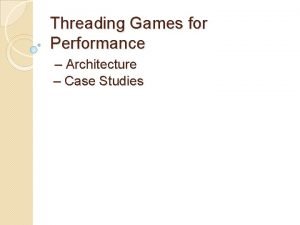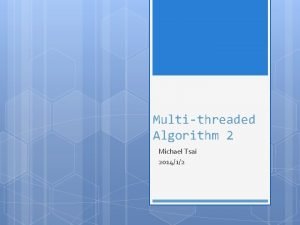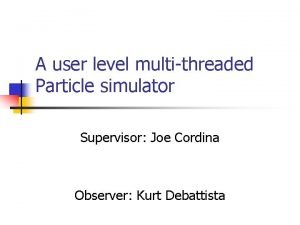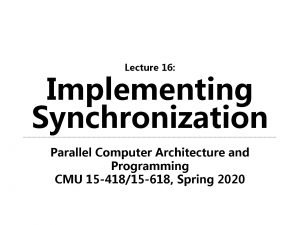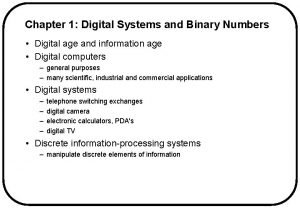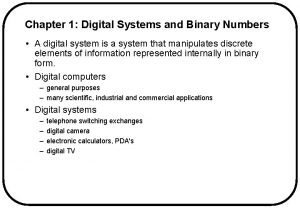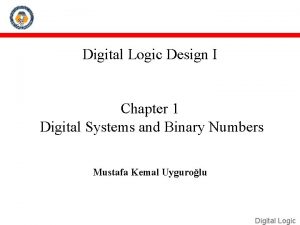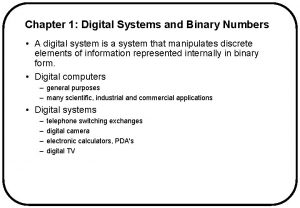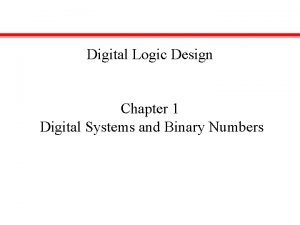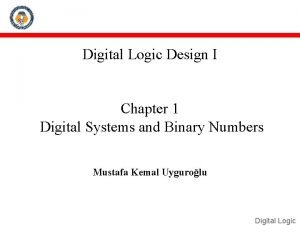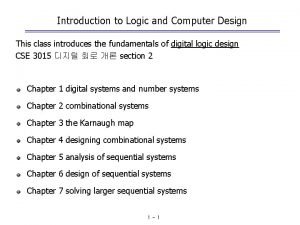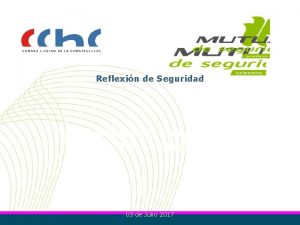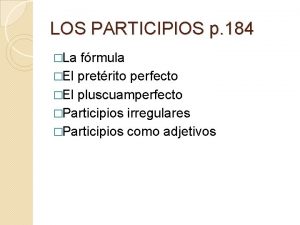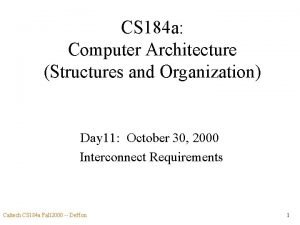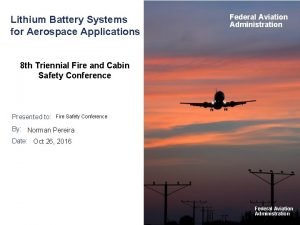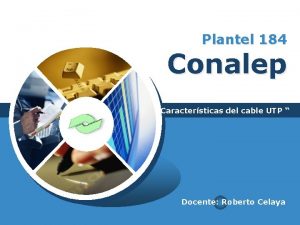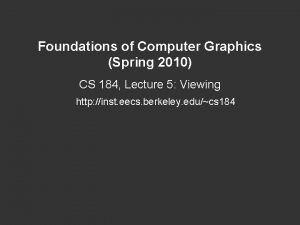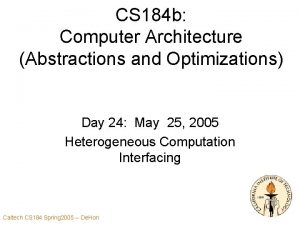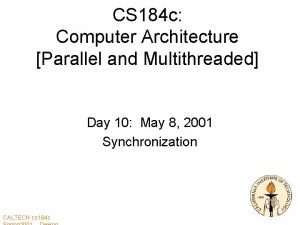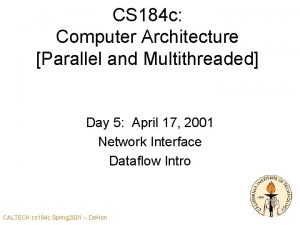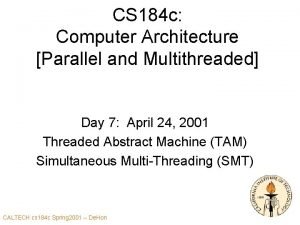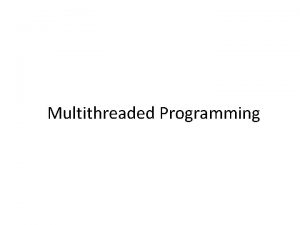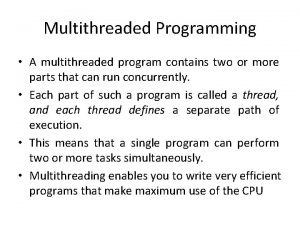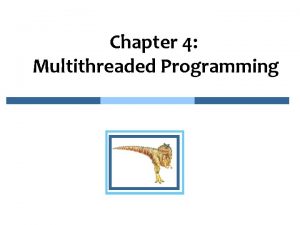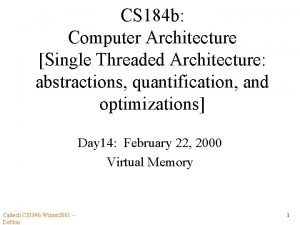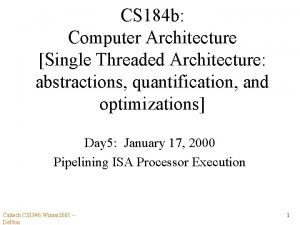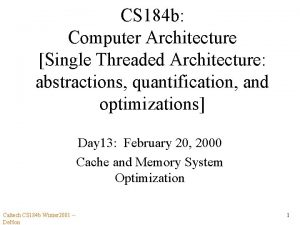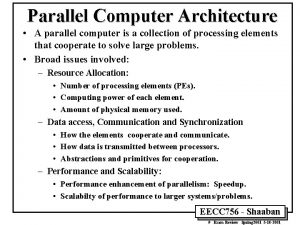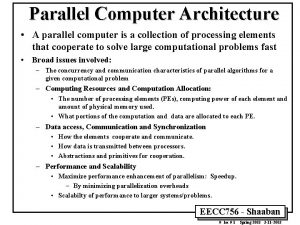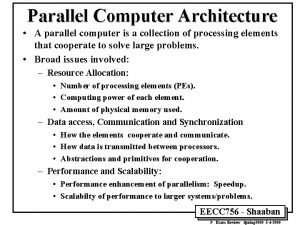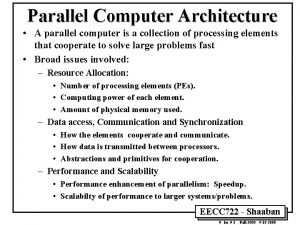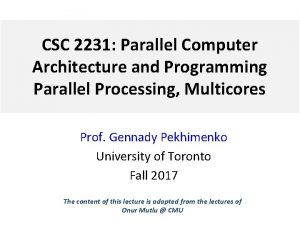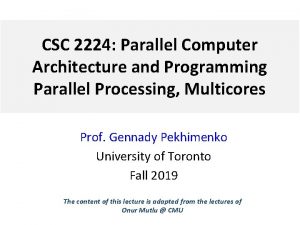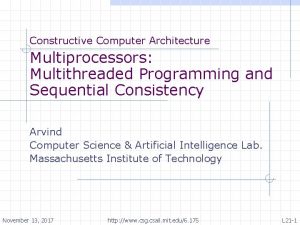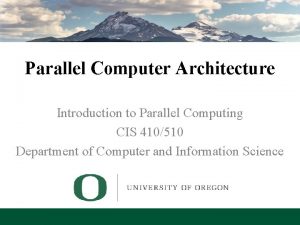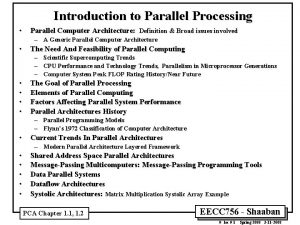CS 184 c Computer Architecture Parallel and Multithreaded
![CS 184 c: Computer Architecture [Parallel and Multithreaded] Day 13: May 17 22, 2001 CS 184 c: Computer Architecture [Parallel and Multithreaded] Day 13: May 17 22, 2001](https://slidetodoc.com/presentation_image_h2/52eea2ca6de59b372d5bfb4cf5848e05/image-1.jpg)









![GARP Hand Results [Callahan, Hauser, Wawrzynek. IEEE Computer, April 2000] CALTECH cs 184 c GARP Hand Results [Callahan, Hauser, Wawrzynek. IEEE Computer, April 2000] CALTECH cs 184 c](https://slidetodoc.com/presentation_image_h2/52eea2ca6de59b372d5bfb4cf5848e05/image-11.jpg)
![GARP Compiler Results [Callahan, Hauser, Wawrzynek. IEEE Computer, April 2000] CALTECH cs 184 c GARP Compiler Results [Callahan, Hauser, Wawrzynek. IEEE Computer, April 2000] CALTECH cs 184 c](https://slidetodoc.com/presentation_image_h2/52eea2ca6de59b372d5bfb4cf5848e05/image-12.jpg)





![REMARC Results MPEG 2 DES CALTECH cs 184 c [Miyamori+Olukotun/FCCM 98] REMARC Results MPEG 2 DES CALTECH cs 184 c [Miyamori+Olukotun/FCCM 98]](https://slidetodoc.com/presentation_image_h2/52eea2ca6de59b372d5bfb4cf5848e05/image-18.jpg)







![One. Chip Memory Interface [1998] • Want array to have direct memory operations • One. Chip Memory Interface [1998] • Want array to have direct memory operations •](https://slidetodoc.com/presentation_image_h2/52eea2ca6de59b372d5bfb4cf5848e05/image-26.jpg)



![One. Chip Instructions • Basic Operation is: – FPGA MEM[Rsource] MEM[Rdst] • block sizes One. Chip Instructions • Basic Operation is: – FPGA MEM[Rsource] MEM[Rdst] • block sizes](https://slidetodoc.com/presentation_image_h2/52eea2ca6de59b372d5bfb4cf5848e05/image-30.jpg)








- Slides: 38
![CS 184 c Computer Architecture Parallel and Multithreaded Day 13 May 17 22 2001 CS 184 c: Computer Architecture [Parallel and Multithreaded] Day 13: May 17 22, 2001](https://slidetodoc.com/presentation_image_h2/52eea2ca6de59b372d5bfb4cf5848e05/image-1.jpg)
CS 184 c: Computer Architecture [Parallel and Multithreaded] Day 13: May 17 22, 2001 Interfacing Heterogeneous Computational Blocks CALTECH cs 184 c

Previously • Interfacing Array logic with Processors – ease interfacing – better cover mix of application characteristics – tailor “instructions” to application • Single thread, single-cycle operations CALTECH cs 184 c

Instruction Augmentation • Small arrays with limited state – so far, for automatic compilation • reported speedups have been small – open • discover less-local recodings which extract greater benefit CALTECH cs 184 c

Today • Continue Single threaded – relax single cycle – allow state on array – integrating memory system • Scaling? CALTECH cs 184 c

GARP • Single-cycle flow-through – not most promising usage style • Moving data through RF to/from array – can present a limitation • bottleneck to achieving high computation rate [Hauser+Wawrzynek: UCB] CALTECH cs 184 c

GARP • Integrate as coprocessor – similar bwidth to processor as FU – own access to memory • Support multi-cycle operation – allow state – cycle counter to track operation • Fast operation selection – cache for configurations – dense encodings, wide path to memory CALTECH cs 184 c

GARP • ISA -- coprocessor operations – issue gaconfig to make a particular configuration resident (may be active or cached) – explicitly move data to/from array • 2 writes, 1 read (like FU, but not 2 W+1 R) – processor suspend during coproc operation • cycle count tracks operation – array may directly access memory • processor and array share memory space – cache/mmu keeps consistent between • can exploit streaming data operations CALTECH cs 184 c

GARP • Processor Instructions CALTECH cs 184 c

GARP Array • Row oriented logic – denser for datapath operations • Dedicated path for – processor/memory data • Processor not have to be involved in array memory path CALTECH cs 184 c

GARP Results • General results – 10 -20 x on stream, feed-forward operation – 2 -3 x when datadependencies limit pipelining [Hauser+Wawrzynek/FCCM 97] CALTECH cs 184 c
![GARP Hand Results Callahan Hauser Wawrzynek IEEE Computer April 2000 CALTECH cs 184 c GARP Hand Results [Callahan, Hauser, Wawrzynek. IEEE Computer, April 2000] CALTECH cs 184 c](https://slidetodoc.com/presentation_image_h2/52eea2ca6de59b372d5bfb4cf5848e05/image-11.jpg)
GARP Hand Results [Callahan, Hauser, Wawrzynek. IEEE Computer, April 2000] CALTECH cs 184 c
![GARP Compiler Results Callahan Hauser Wawrzynek IEEE Computer April 2000 CALTECH cs 184 c GARP Compiler Results [Callahan, Hauser, Wawrzynek. IEEE Computer, April 2000] CALTECH cs 184 c](https://slidetodoc.com/presentation_image_h2/52eea2ca6de59b372d5bfb4cf5848e05/image-12.jpg)
GARP Compiler Results [Callahan, Hauser, Wawrzynek. IEEE Computer, April 2000] CALTECH cs 184 c

PRISC/Chimera … GARP • PRISC/Chimaera – basic op is single cycle: expfu (rfuop) – no state – could conceivably have multiple PFUs? – Discover parallelism => run in parallel? – Can’t run deep pipelines CALTECH cs 184 c • GARP – basic op is multicycle • gaconfig • mtga • mfga – can have state/deep pipelining – ? Multiple arrays viable? – Identify mtga/mfga w/ corr gaconfig?

Common Theme • To get around instruction expression limits – define new instruction in array • many bits of config … broad expressability • many parallel operators – give array configuration short “name” which processor can callout • …effectively the address of the operation CALTECH cs 184 c

VLIW/microcoded Model • Similar to instruction augmentation • Single tag (address, instruction) – controls a number of more basic operations • Some difference in expectation – can sequence a number of different tags/operations together CALTECH cs 184 c

REMARC • Array of “nano-processors” – 16 b, 32 instructions each – VLIW like execution, global sequencer • Coprocessor interface (similar to GARP) – no direct array memory [Olukotun: Stanford] CALTECH cs 184 c

REMARC Architecture • Issue coprocessor rex – global controller sequences nanoprocessors – multiple cycles (microcode) • Each nanoprocessor has own I-store (VLIW) CALTECH cs 184 c
![REMARC Results MPEG 2 DES CALTECH cs 184 c MiyamoriOlukotunFCCM 98 REMARC Results MPEG 2 DES CALTECH cs 184 c [Miyamori+Olukotun/FCCM 98]](https://slidetodoc.com/presentation_image_h2/52eea2ca6de59b372d5bfb4cf5848e05/image-18.jpg)
REMARC Results MPEG 2 DES CALTECH cs 184 c [Miyamori+Olukotun/FCCM 98]

Configurable Vector Unit Model • Perform vector operation on datastreams • Setup spatial datapath to implement operator in configurable hardware CALTECH cs 184 c • Potential benefit in ability to chain together operations in datapath • May be way to use GARP/NAPA? • One. Chip (to come…)

Observation • All single threaded – limited to parallelism • instruction level (VLIW, bit-level) • data level (vector/stream/SIMD) – no task/thread level parallelism • except for IO dedicated task parallel with processor task CALTECH cs 184 c

Scaling • Can scale – number of inactive contexts – number of PFUs in PRISC/Chimaera • but still limited by single threaded execution (ILP) • exacerbate pressure/complexity of RF/interconnect • Cannot scale – number of active resources CALTECH cs 184 c • and have automatically exploited

Model: Autonomous Coroutine • Array task is decoupled from processor – fork operation / join upon completion • Array has own – internal state – access to shared state (memory) • NAPA supports to some extent – task level, at least, with multiple devices CALTECH cs 184 c

Processor/FPGA run in Parallel? • What would it take to let the processor and FPGA run in parallel? – And still get reasonable program semantics? CALTECH cs 184 c

Modern Processors (CS 184 b) • Deal with – variable delays – dependencies – multiple (unknown to compiler) func. units • Via – register scoreboarding – runtime dataflow (Tomasulo) CALTECH cs 184 c

Dynamic Issue • PRISC (Chimaera? ) – register, work with scoreboard • GARP – works with memory system, so register scoreboard not enough CALTECH cs 184 c
![One Chip Memory Interface 1998 Want array to have direct memory operations One. Chip Memory Interface [1998] • Want array to have direct memory operations •](https://slidetodoc.com/presentation_image_h2/52eea2ca6de59b372d5bfb4cf5848e05/image-26.jpg)
One. Chip Memory Interface [1998] • Want array to have direct memory operations • Want to fit into programming model/ISA – w/out forcing exclusive processor/FPGA operation – allowing decoupled processor/array execution [Jacob+Chow: Toronto] CALTECH cs 184 c

One. Chip • Key Idea: – FPGA operates on memory regions – make regions explicit to processor issue – scoreboard memory blocks CALTECH cs 184 c

One. Chip Pipeline CALTECH cs 184 c

One. Chip Coherency CALTECH cs 184 c
![One Chip Instructions Basic Operation is FPGA MEMRsource MEMRdst block sizes One. Chip Instructions • Basic Operation is: – FPGA MEM[Rsource] MEM[Rdst] • block sizes](https://slidetodoc.com/presentation_image_h2/52eea2ca6de59b372d5bfb4cf5848e05/image-30.jpg)
One. Chip Instructions • Basic Operation is: – FPGA MEM[Rsource] MEM[Rdst] • block sizes powers of 2 • Supports 14 “loaded” functions – DPGA/contexts so 4 can be cached CALTECH cs 184 c

One. Chip • • Basic op is: FPGA MEM no state between these ops coherence is that ops appear sequential could have multiple/parallel FPGA Compute units – scoreboard with processor and each other • single source operations? • can’t chain FPGA operations? CALTECH cs 184 c

To Date. . . • In context of full application – seen fine-grained/automatic benefits • On computational kernels – seen the benefits of coarse-grain interaction • GARP, REMARC, One. Chip • Missing: still need to see – full application (multi-application) benefits of these broader architectures. . . CALTECH cs 184 c

Model Roundup • Interfacing • IO Processor (Asynchronous) • Instruction Augmentation – PFU (like FU, no state) – Synchronous Coproc – VLIW – Configurable Vector • Asynchronous Coroutine/coprocesor • Memory memory coprocessor CALTECH cs 184 c

Models Mutually Exclusive? • E 5/Triscend and NAPA – support peripheral/IO – not clear have architecture definition to support application longevity • PRISC/Chimaera/GARP/One. Chip – have architecture definition – time-shared, single-thread prevents serving as peripheral/IO processor CALTECH cs 184 c

Summary • Several different models and uses for a “Reconfigurable Processor” • Some drive us into different design spaces • Exploit density and expressiveness of fine-grained, spatial operations • Number of ways to integrate cleanly into processor architecture…and their limitations CALTECH cs 184 c

Next Time • Can imagine a more general, heterogeneous, concurrent, multithreaded compute model • SCORE – streaming dataflow based model CALTECH cs 184 c

Big Ideas • Model – preserving semantics – decoupled execution – avoid sequentialization / expose parallelism w/in model • extend scoreboarding/locking to memory • important that memory regions appear in model – tolerate variations in implementations – support scaling CALTECH cs 184 c

Big Ideas • Spatial – denser raw computation – supports definition of powerful instructions • assign short name --> descriptive benefit • build with spatial --> dense collection of active operators to support – efficient way to support • repetitive operations • bit-level operations CALTECH cs 184 c
 Jumlah level dalam gambar ini adalah . . . .
Jumlah level dalam gambar ini adalah . . . . Thread dalam java
Thread dalam java Multithreaded games
Multithreaded games Multithreaded algorithms
Multithreaded algorithms Apt multithreaded
Apt multithreaded Synchronization in computer architecture
Synchronization in computer architecture Types of interrupt in computer organisation
Types of interrupt in computer organisation Difference between computer architecture and organisation
Difference between computer architecture and organisation Bus architecture in computer organization
Bus architecture in computer organization Fgi and fgo in computer architecture
Fgi and fgo in computer architecture Bcd addition of 184 and 576
Bcd addition of 184 and 576 Rh nomenclature
Rh nomenclature Binary code example
Binary code example Bcd addition of 184 and 576
Bcd addition of 184 and 576 Digital systems and binary numbers
Digital systems and binary numbers Bcd addition of 184 and 576
Bcd addition of 184 and 576 Using 10's complement subtract 72532-3250
Using 10's complement subtract 72532-3250 Bcd addition of 184 and 576
Bcd addition of 184 and 576 Moment of parallel forces
Moment of parallel forces Annie's dress was old, faded, and it had wrinkles.
Annie's dress was old, faded, and it had wrinkles. Parrallel structure
Parrallel structure Parallel structure def
Parallel structure def Parallel structure meaning
Parallel structure meaning Artículo 184
Artículo 184 184/1 tck
184/1 tck Signing naturally 4:1
Signing naturally 4:1 7 sinf ona tili 21 mashq
7 sinf ona tili 21 mashq 4 184 joules
4 184 joules Cs 184
Cs 184 Cs 184
Cs 184 Rtca do-311a
Rtca do-311a Dispositivos disimiles y similares
Dispositivos disimiles y similares Cs 184 berkeley
Cs 184 berkeley P 184
P 184 184 bao
184 bao Tck 184
Tck 184 Art 180 lgt
Art 180 lgt Undao
Undao Cs 184
Cs 184


